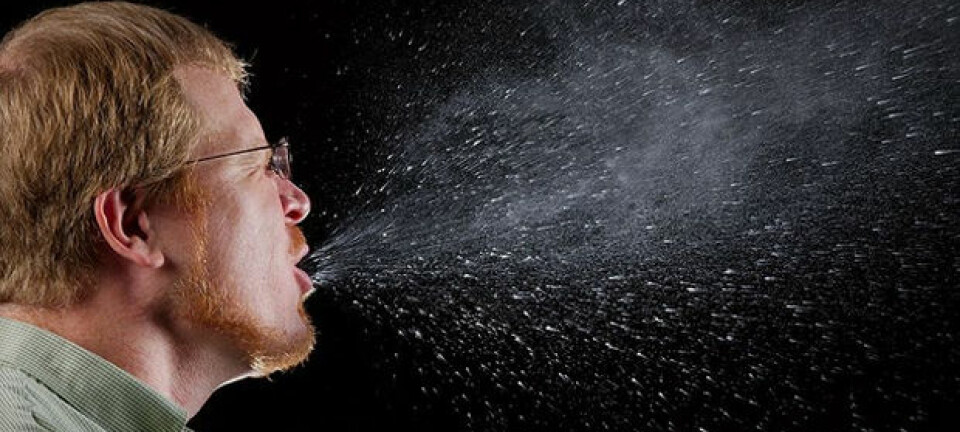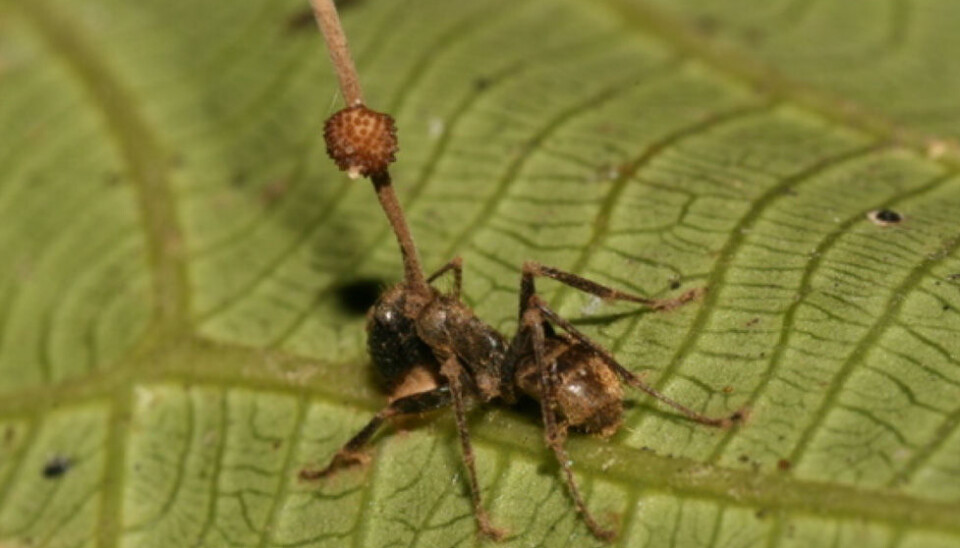
Lilliputian shop of horrors
Do you cringe at the thought of head lice or intestinal worms? Well, if you were a little creepy thing you would risk something much worse than an itch.
Denne artikkelen er over ti år gammel og kan inneholde utdatert informasjon.
Over half the planet’s species live in or on other living things.
Viruses, bacteria, fungi and a myriad of unicellular organisms infest everything from oak trees to spiders. There are even microorganisms that live inside other microorganisms.
In addition, we have all those worms that set up houses in other creatures, sometimes ones that are just barely larger than themselves. If you were a tiny creature instead of a mammal atop the food chain, uninvited guests could quickly turn your life into a first-rate horror film.
Then you would find that sometimes the stowaway wouldn’t be satisfied with just a free ride – it would also help itself to your innards. It could even take the helm in your nervous system and make you do horrific things.
Long worm in a little bug
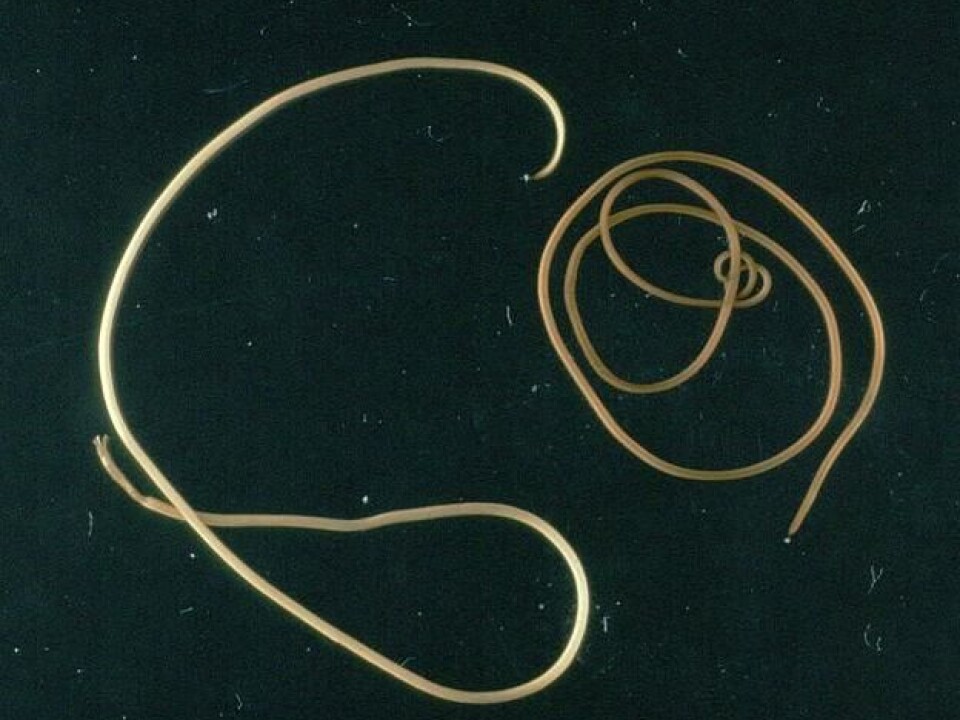
It often boils down to the eternal problem for parasites: How to spread from one host to another? Many hosts don’t suffice as a domicile during the entire life of a parasite.
What do you do, for instance, if you hatch and live inside a cricket, but can only mate and lay eggs in water?
The horsehair worm Paragordius tricuspidatus has solved this quandary by giving its host a strong and dangerous inclination to leap into rivers and ponds.
It all starts when an unfortunate cricket consumes a horsehair worm egg. Soon the tiny worm hatches and starts feeding on the insides of the insect. After a while this intruder grows to be a 10-15 centimetre hair-like worm inside a 1-centimetre cricket.
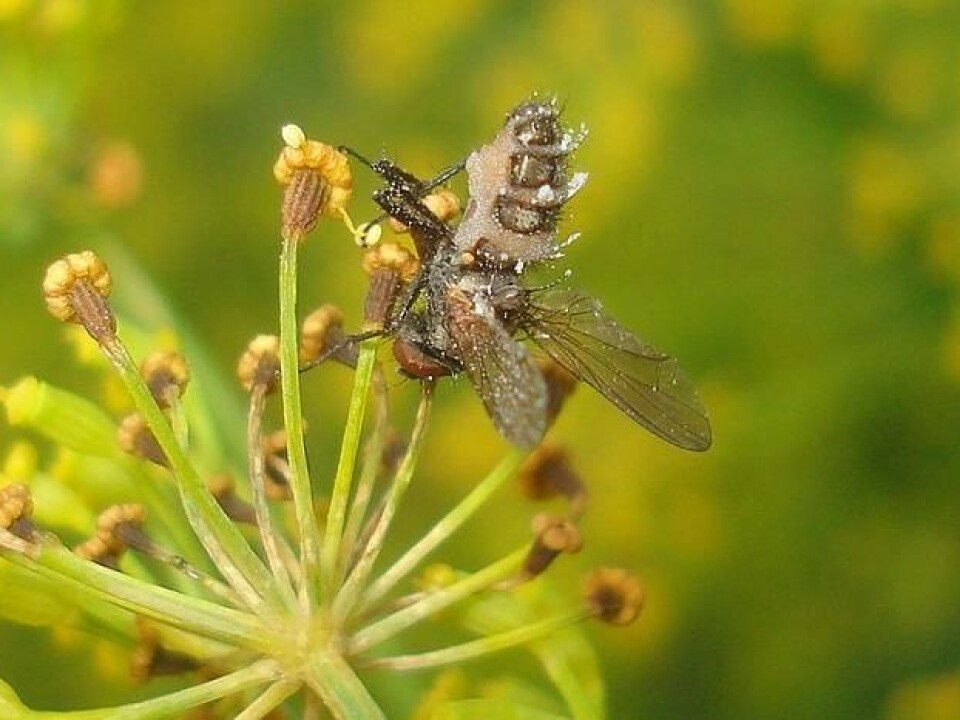
Now its time to move out.
Watery grave
And here comes its coupe de grâce.
In 2006 a research team demonstrated that the worm produces substances that influence the host’s nervous system. Scientists still don’t know quite how, but the result is well known for entomologists and shocked witnesses:
The cricket visits the nearest swimming pool, stream or waterhole, and dives in.

The insect drowns, but the shockingly lengthy horsehair worm wiggles out of its butt, ready to find a mate. After that it lays eggs at the water’s edge, where new crickets come to feed.
Unfortunately for other bugs P. tricuspidatus isn’t the only commander of remote controlled suicide missions.
Dying in the treetops
The caterpillar of the gypsy moth (Lymantria dispar) can be attacked by a wicked virus. In 2011 scientists found out that a microscopic intruder uses hormones to change a cautious nocturnal creeper into a foolhardy climber.
In the middle of the day it crawls up among the dangers in the treetops where it dies in its tracks. Then it dissolves so that virally infected body parts fall down to where new larva are likely to be crawling the following night.
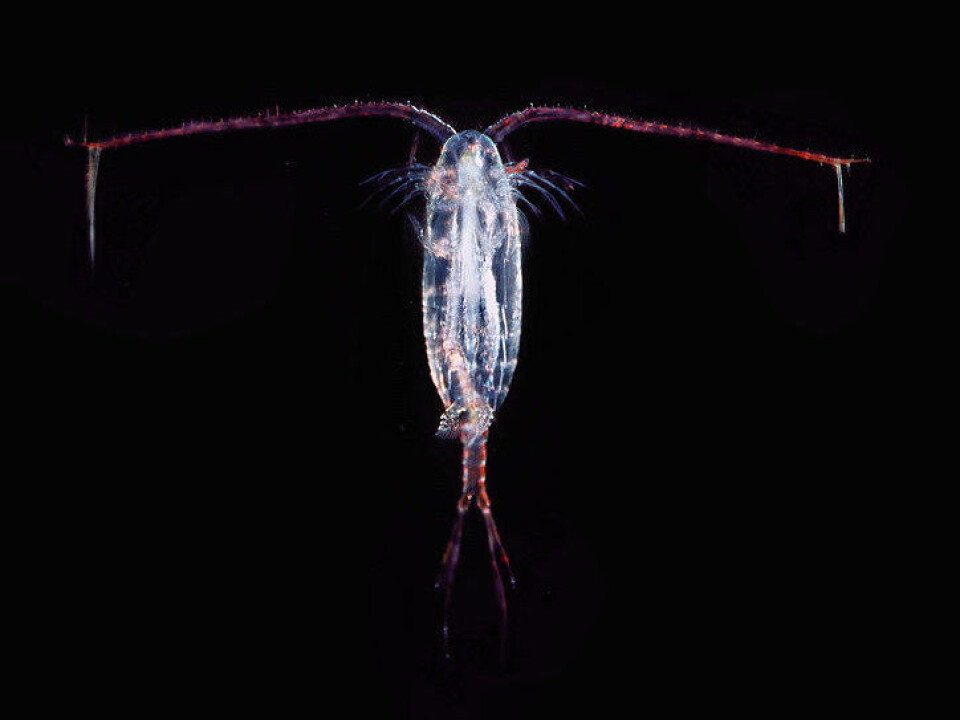
In the world of parasitic fungi things aren’t any less macabre.
Horny flies
An example is the fungus Entomophthora muscae, which infects flies.
As the insect’s life nears completion, the fungus gets it to climb to the top of a blade of grass to die. Then spore-bearing stalks grow out of its lower segment. From this lofty position the spores are shot out where they can land on other flies nearby.
That’s not all. The infected corpse remains perched atop the vegetation with an enticing abdomen sticking up in the air. Sexually aroused male flies that happen to fly by spot this tantalizing rear end, and many fall to temptation. When they make contact they too get infected.
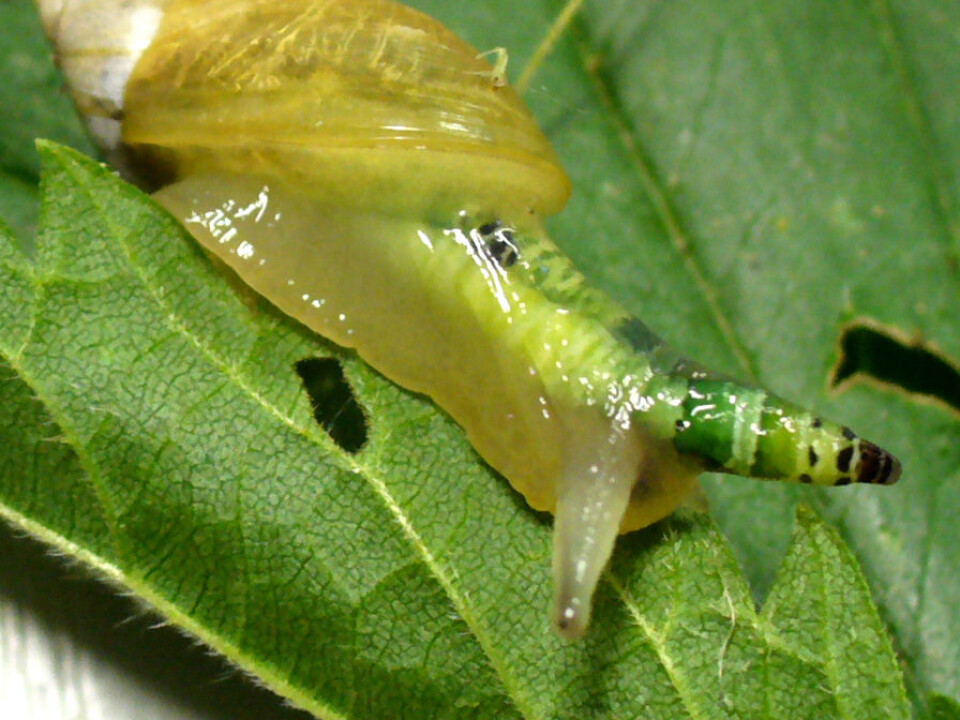
Similar miseries can occur with ants in tropical areas. Their brains can be taken over by the fungus Ophiocordyceps unilateralis.
Zombie ants
In 2009 the expert on parasites, David Hughes and his colleagues published new observations of how amazingly precise this parasite can control its host.
Somehow O. unilateralis makes the dying insect head for the north side of a leaf, around 25 cm from the ground, where the temperature and humidity is just right for the fungus.
The zombie aunt uses its final energy to attach itself there. The fungus eats up its innards before growing a long staff out of the dead insect’s neck. This acts as a tower from which it sprinkles deadly spores down on new unfortunate ants passing by below.
But if you thought this was the most elaborate relationship between a parasite and a host, you’re wrong. Flatworms might take the cake in this category.
Intermediate hosts
Some parasitic flatworms exhibit an astoundingly complicated life cycle. They pass through several different stages in a diversity of hosts, ranging from snails and birds to ants and sheep.
Bridging the gap from one host to another poses quite a challenge and flatworms also manipulate their hosts to make it work.
“Take for example the tapeworm Schistocephalus solidus,” says Egil Karlsbakk at the Institute of Marine Research in Bergen.
Complex array
“This is a common tapeworm in Norway. It has a little crustacean called a copepod as its first intermediate host and a fish called a stickleback as its second, before ending up in a bird as its final host,” explains Karlsbakk.
There’s no use in trying to cut out one of these stages. First the little crustacean is infested with eggs or larvae, but the tapeworm can only grow to size in the stickleback. Then it has to get into the intestines of a bird, where it can deposit eggs.
The worm secures this chain of necessary events and gets into the right stomach by guiding the fish according to its needs.
But first it has to take on the little crustacean. Here too, is an example of a parasite changing the behavioural pattern of its chosen host.
More easily eaten
“The parasite manipulates the behaviour of the copepod, making it abnormally active. The little crustacean catches the attention of the stickleback more easily with all this motion, making it more likely to be swallowed by the fish,” says Karlsbakk.
Then it’s the stickleback’s turn. After spending time in its abdomen the tapeworm grows large. Often several of the worms will live in a single fish.
“The worms in its abdominal cavity can weigh just as much as the fish itself. They change its behaviour, making it less weary of predators. So it becomes an easier catch for a bird,” says Kalsbakk.
The birds themselves are lucky. They don’t take much notice of the worm, which is out of their system within a few days. But their droppings contain plenty of eggs, ready to infest new little crustaceans.
“However, the most spectacular example of parasitic manipulation of a host might be another flatworm − Leucochloridium paradoxum,” says Kalsbakk.
Fake caterpillar
With L. paradoxum – which is also found in Norway – we move into a more disgusting realm.
This flatworm only uses one transitional host – unfortunate members of an amber snail species – but this snail really takes a licking.
After passing through a series of developmental stages inside the snail, the parasite is ready to rock. It now has to get inside birds that don’t usually favour escargot as Hors D’oeuvres.
But L. paradoxum is not perplexed. It creates long ‘broodsacs’ full of tiny larva,” explains Karlsbakk.
The sacs then pulsate in a variety of colours and invade the antenna of the snail which makes the snail’s antenna look like a wiggling caterpillar or grub.
The antenna attracts birds who love to eat caterpillars. After the bird eats the snail antenna, it also swallows a large bunch of the worm larva at the same time.
Once inside the bird, the Leucochloridium larvae can reproduce and deposit eggs, which are spread into the wild again through the bird droppings. There the eggs can land in the snail’s territory, where the horror story can start again.
Are parasites evil?
After a guided tour of part of the parasitic world it’s easy to get the impression that these creatures are mean and nasty. Are they really?
Of course not.
The parasites are well adapted to their lifestyles and environmental niches. None of these organisms are what we could legally deem responsible for their actions. They only follow the instincts created by mutations and natural selection, evolved through millions of generations.
We also need to remember that parasites aren’t all that special – most species on Earth, including us, live off of others. So the tapeworm that takes over the stickleback fish isn’t any meaner than the deer which merrily eats an innocent sapling down to its roots.
The parasites aren’t especially devious either. None of the zombie fungi have planned their schemes for taking over an ant.
Even though we joke about the intentions of these organisms and their personalities, these stowaways can’t be called sinister. No more sinister than the cow, which has developed four stomachs to extract as much energy as possible from poor blades of grass.
The parasites are just slightly more spectacular.
-------------------------------------
Read this article in Norwegian at forskning.no
Translated by: Glenn Ostling
Scientific links
- D. G. Biron et al., ‘Suicide’ of crickets harbouring hairworms: a proteomics investigation, Insect Molecular Biology, vol 15, no 6, pp 731–742, December 2006.
- K. Hoover, M. Grove, M. Gardner, D. P. Hughes, J. McNeil, J. Slavicek, A Gene for an Extended Phenotype, Science, 9 September 2011, vol 333, no 6048, p 1401.
- Sandra B. Andersen et. al., The Life of a Dead Ant: The Expression of an Adaptive Extended Phenotype, The American Naturalist, September 2009.







